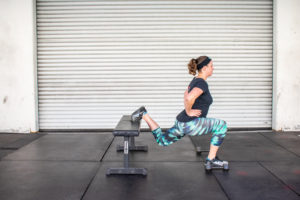
Its 2020 and RECOVERY has taken the spotlight. It turns out, what we do outside of the gym has just as much, if not more impact on our desired outcome as what we do in training. With that in mind, here are some of the best principles and strategies that you can use to make recovery work for you.
1. Fuel the Machine!
Fluids – “60% of the human body is water”, “8 glasses a day”, “one gallon a day”, “Hydrate or die!” OK, clichés are out of the way and you know you should drink plenty of water but how much? I made a video going into detail about the importance and dosage of hydration which you can find on the Sports Performance Inner Circle Facebook page, but the short answer is………. it depends. Hydration is not a one size fits all prescription, but the current guidelines recommend 3.7 liters of fluid for men and 2.7 for women and that’s including water from the food we eat which is quite difficult to keep track of. Standards vary across many different health agencies and research institutions, but they all agree on one thing: exercise = fluid loss. The American Council on Exercise recommends 17-20oz of water 2 hours before exercise, 7-10 oz for every 20 minutes of exercise, 16-24 oz immediately following, and supplementation with electrolyte replacement like Gatorade or Pedialyte for vigorous exercise exceeding 45 minutes or for athletes who sweat profusely. While these are all great goals to shoot for, it’s important to understand that your fluid requirements may vary day to day and most active individuals can stay adequately hydrated by keeping a reusable water bottle handy sipping and refilling it a few times throughout the day. Personally, I like to keep my fluid intake interesting, so I always have a refreshing sparkling water on hand.
Nutrition – In the context of recovery and maintaining your energy level throughout the day, there are some simple nutrition guidelines to follow to make sure your training session is productive. Protein, Carbohydrates, and Fat are the building blocks, A.K.A macronutrients, that make up the human diet and for the majority of people, a balanced intake of each is required to support activity and recovery. Be sure to eat an adequate meal including fibrous carbohydrates like wheat bread or oatmeal at least an hour or two before exercising to load up energy stores. Its also crucial to replenish within an hour after a workout by eating a balanced meal that includes quality protein sources like meat, fish, dairy, eggs and for vegetarian athletes, tofu, seitan, and legumes are great sources of protein. Post-workout meals should also include adequate amounts of carbs for energy store replacement and healthy fats for protein transport and vitamin absorption. Nothing can replace a hearty post-workout meal but for the busy athlete, sometimes those crucial macros must be acquired by other means.
Supplements – It’s human nature to seek out the magic potion that will help make you stronger or faster. The harsh reality is that supplements are often used as replacements for a healthy diet or stand-alone performance enhancers instead of their intended purpose; to Supplement a healthy diet. Once good nutrition strategies are in place, some supplements can be very useful to aid in performance and recovery but not all supplements are created equally. Do your own research before using any supplements as some are proven to be safer and more effective than others. Some of the most common and research supported supplements include caffeine, creatine monohydrate and whey protein but be sure to check ingredients and health warnings before implementing.
2. Get Some ZzZzZ’s!
Everyone has heard that they need 8 hours of sleep a night and for most, 8 hours is a good target to shoot for. Sleep requirements vary from person to person and by age group for instance, the National Sleep Foundation recommends children ages 6-13 should get 9-11 hours while adults from 18-64 are recommended 7-9 hours. While recommendations may vary, sleep is an essential part of the recovery process because it allows your body to divert energy and resources to the release of human growth hormone and muscle protein synthesis which help to rebuild damaged tissue after exercise.
3. Listen to your body.
You have the rest of your life to improve, but it only takes a split second to injure yourself. In other words, recovery includes knowing when you are prepared to train hard and when you should decrease your workload or take an active recovery day. You may not always go into every workout at 100% and that’s ok but every workout should be productive. If you take on more than you are prepared for you increase your risk of injury and excessive soreness can extend that risk or leave you unable to train for several days. Before each workout, take a moment to assess your readiness including your sleep, last meal, soreness, aches and pains then adjust your workout if necessary. Try to remember that your workouts will yield greater results if you are able to train consistently.
4. Active recovery.
The human body is an incredible machine that is always working to achieve or maintain balance. Recovery begins after your last rep or stride and ends when you start your next workout. Most of the time we are in passive recovery mode which is your body doing its best to carry out its rebuilding process but that doesn’t mean we should just binge watch the entire Harry Potter franchise (including the Fantastic Beasts prequels and deleted scenes) and wait for our cells to finish their jobs! Active recovery is the simple act of continuing movement for the purpose of assisting your body’s recovery process. Think light and breezy; active recovery exercise should be low impact and low intensity so that you can improve blood flow and oxygen delivery to sore or stiff areas without generating more soreness. So when you’re 3 movies deep in your HP marathon take a break to go for a walk, try some yoga, stretch, foam roll, swim, bike, or anything that gets your heart pumping without leaving you tired or sore.
5. Establish a recovery routine.
Whether we intend to or not, we live our lives in a series of routines; most of which we may not even realize. As humans, we crave consistency and predictability and the same concept applies to our fitness and recovery. Perhaps the most important takeaway from this article is this: Take Steps 1-4 and create a routine that fits your life and meets your personal needs and goals. The key to making progress is consistency so it’s especially important that your routine is personal to you and fits easily into your life without disrupting other priorities. Try to tackle one area at a time, beginning with where you need the greatest improvement. My biggest hurdle is sleep because it is usually the first thing sacrificed when life gets busy. To improve my sleep habits, I set a target bedtime and wakeup time with a 30 min buffer for each so I can afford a little bit of delay in getting to bed or hit the snooze button a couple times. Likewise, you can create goals like this for any of your recovery steps and gradually implement them into your routine one at a time.
Be patient with yourself; big changes do not happen overnight, but RECOVERY DOES.
As always, we hope this helps you and if you need anything from me, or the team at Sports Performance, email us at TeamSP@SportsPerformancePT.com or, text us! You can reach us at (619) 724 – 4427!
-Coach Alex

STAY CONNECTED
Instagram: CLICK HERE
Facebook: CLICK HERE
YouTube: CLICK HERE
Podcast: CLICK HERE
TUNE IN TO OUR PODCAST













